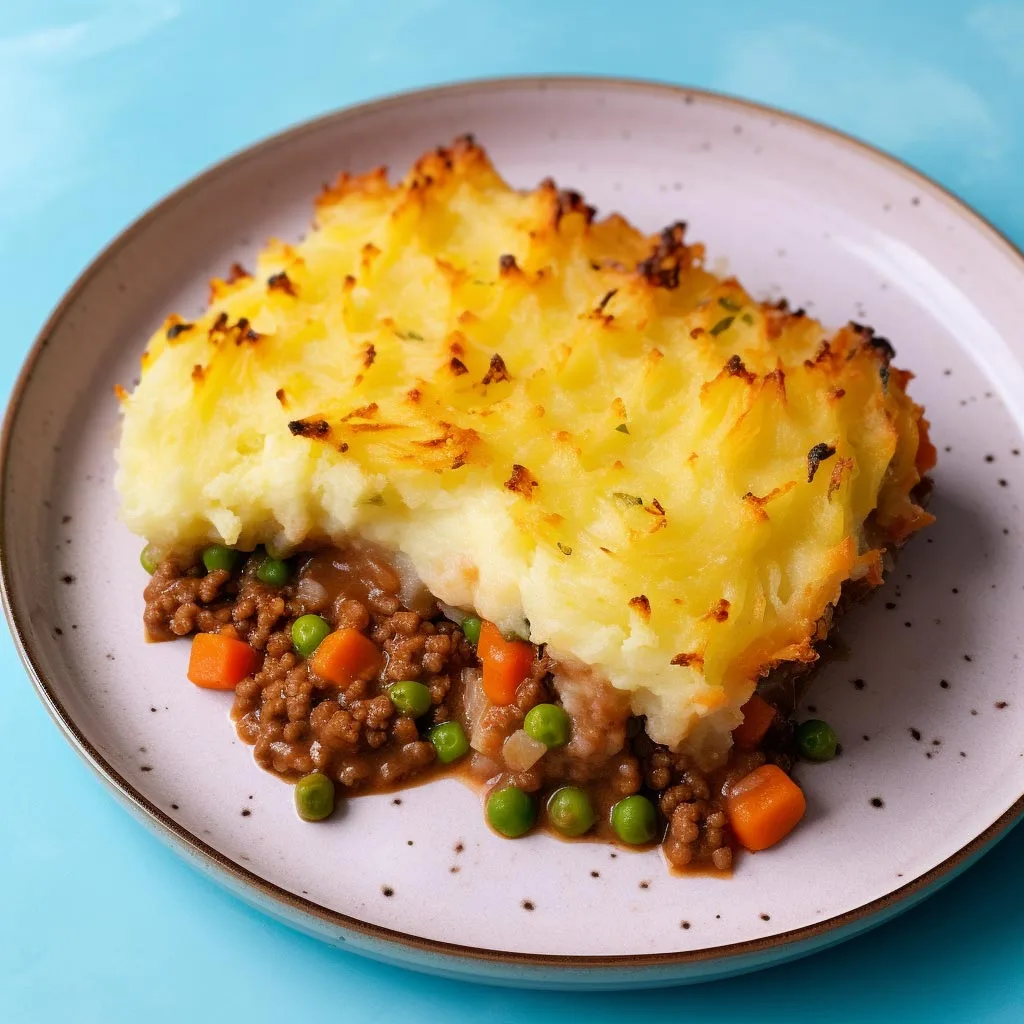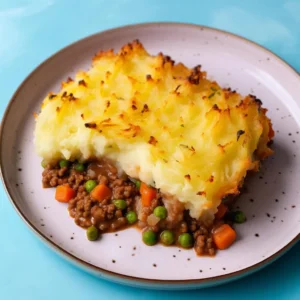
Cottage pie is a timeless classic that has been a comforting staple in kitchens around the world for generations. Its humble origins can be traced back to Britain in the late 18th century, where it was traditionally made with leftover meat, mixed with vegetables, topped with mashed potatoes, and baked to golden perfection.
This hearty dish was not only delicious, but also an economical way to make use of ingredients that might otherwise go to waste.
The beauty of cottage pie lies in its simplicity and versatility. Despite its rustic beginnings, it has stood the test of time and evolved to accommodate different tastes and dietary preferences. From the traditional beef and potato combination to vegetarian or vegan variations, cottage pie has something to offer everyone.
Although cottage pie may seem intimidating to some, it is actually quite easy to make. With a few simple ingredients and some patience, you can create a wholesome and satisfying meal that is sure to please even the pickiest of eaters.
Whether you are a seasoned chef or just starting out in the kitchen, cottage pie is a recipe that anyone can master with a little practice.
So, if you are looking to warm your soul with a hearty and delicious meal, look no further than cottage pie. Its rich and savory flavors, combined with its comforting simplicity, make it a go-to dish for any occasion. Let’s get cooking!
Expert Tip: For extra flavor, you can add a splash of red wine to the beef mixture while simmering.
Beef Mince: Ground beef that is the main protein in this hearty dish. It adds a savory and meaty flavor to the cottage pie.
Olive Oil: Used for cooking the vegetables and beef mince, olive oil adds a rich and subtle fruity flavor to the dish.
Onion: Adds a sweet and savory flavor to the cottage pie. When cooked, onions become caramelized and bring depth to the dish.
Carrots: Provide a natural sweetness and a pop of color to the cottage pie. They add a bit of texture and flavor contrast to the dish.
Garlic: Adds a pungent and aromatic flavor to the dish. Garlic enhances the overall taste of the cottage pie.
Tomato Puree: Thick and rich, tomato puree adds depth and a touch of sweetness to the cottage pie. It also helps to thicken the sauce.
Beef Stock: Adds a rich and savory flavor base to the cottage pie. It enhances the meaty taste of the beef mince.
Worcestershire Sauce: Provides a tangy and umami flavor to the dish. It adds complexity and depth to the cottage pie.
Thyme Dried: A fragrant herb that adds a woodsy and slightly floral flavor to the dish. Thyme complements the beef mince and enhances the overall taste.
Rosemary Dried: Another aromatic herb that adds a piney and earthy flavor to the cottage pie. Rosemary pairs well with beef and brings a unique taste to the dish.
Black Pepper: Adds a bit of heat and a subtle spiciness to the dish. Black pepper also enhances the other flavors in the cottage pie.
Salt: Enhances the overall flavors in the dish and helps to balance the sweetness of the vegetables and tomato puree.
Potatoes: Boiled and mashed to create a creamy and fluffy topping for the cottage pie. Potatoes add a comforting and hearty element to the dish.
Milk: Used to make the mashed potato topping creamy and smooth. Milk adds a rich and dairy flavor to the dish.
Butter: Adds richness and a velvety texture to the mashed potatoes. Butter also contributes a deliciously buttery flavor to the cottage pie.
Expert Tip: Make sure to use lean beef mince for a healthier cottage pie with less fat content.
Expert Tip: Experiment with different types of cheese for topping the mashed potatoes, such as cheddar or Parmesan, to add depth to the dish.
Cottage Pie is a comforting and delicious dish made with ground meat (usually beef), vegetables, and topped with creamy mashed potatoes.
To make Cottage Pie, you will need ground beef, onion, garlic, carrots, peas, beef broth, tomato paste, Worcestershire sauce, salt, pepper, and mashed potatoes.
Yes, Cottage Pie is a great make-ahead dish. You can prepare it in advance and bake it when you are ready to enjoy it.
Yes, Cottage Pie can be frozen before or after baking. Simply cover it tightly with plastic wrap and aluminum foil before freezing.
To reheat Cottage Pie, simply place it in a preheated oven at 350°F for about 20-30 minutes, or until heated through.
Yes, feel free to customize Cottage Pie with your favorite ingredients such as mushrooms, corn, or different seasonings to suit your taste preferences.
Here are some more recipes for you to enjoy! If you my recipes don’t forget to rate and leave a comment.
If you have any recipe suggestions, please do not hesitate to ask me. A great way to stay in contact with me is through Instagram, Facebook, Twitter and YouTube. Don’t forget to tag me @CookwithNabeela in your recipe photos!

Subscribe now to receive my latest recipes directly in your inbox. Stay up-to-date and never miss out!

I love to cook! I want to share with you my favourite, delicious family-friendly recipes. I want to inspire you to create fantastic food for your family every day.
Latest comments (1)
The image shows peas – but no peas are mentioned in the ingredients!